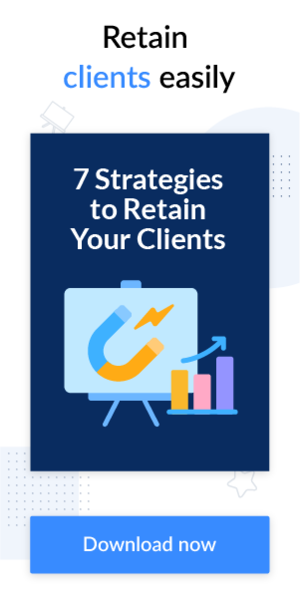Your coaching business’s online presence can significantly impact your success, regardless of your niche. Having a well-designed business coach website is the number one way you can inform your potential clients about your business and services. From our blog post, you’ll learn six reasons you need a website as a coach. You’ll also find out what items it should contain to convert visitors into clients.
Six solid reasons to build a coaching website
If your business is not on the internet, then your business will be out of business.
According to the Local Consumer Review Survey 2020 by BrightLocal, 93 percent of US consumers used the internet to search for local businesses in the past year. The pandemic has fostered people’s digital reliance. Even now, when lockdown restrictions are gradually being relaxed, online searches are not an additional but a major source of information about services.
With this in mind, having a website for your coaching business is obviously important. There are several benefits you can get from your business’s web presence. Your website:
- Serves as your virtual business card. Your website should provide the most important information about you as a coach to pique your potential clients’ interest. It should tell about the services you deliver so people understand what they can get from working with you and how.
- Is a source of passive income. You can sell various informational products like ebooks and video courses via your website. Such products are created once and then can be shared for a long time, opening up a source of passive income.
- Represents your brand. Your brand is what can help you differentiate yourself in an oversaturated coaching market and attract people who share your values and vision.
- Allows you to stay competitive. Now that so many businesses are online, without a website, you can miss the opportunity to get more clients even if your services are better than your competitors’.
- Helps you build trust. Your website is a place where you can share results and feedback from your clients as well as post expert content that’s relevant to your target prospects, thus delivering value for free before selling your services and establishing trust with your potential clients.
- Backs up your social media profiles. You can share a link to your website on your social media profiles, and vice versa, reaching a wider target audience and allowing people to choose their preferred communication channel.
Six key traits of great coaching websites
A website is a window through which your business says hello to the world.
There are 1.5 billion websites in the world today. With so many, it is rather challenging to stand out from the crowd. To build a coaching website that will help you convert visitors into paying clients you have to look out for these traits.
#1. Your website serves a specific purpose
Having a website just because everybody else has one is a failed strategy. You should clearly understand why you need a website. It’s important that you define a measurable purpose, such as to:
- Generate leads
- Get more social media followers
- Bring in new referrals
- Get traffic from search engines
- Grow your email list
- Boost program/course/book sales
- Get more speaking gigs
#2. Your website is customer-centric
Your website has to be appealing to your prospects. It should be focused on them and provide value for them. How can you achieve this?
- Ensure your website is well-structured and easy to navigate
- Share content that addresses the needs and pain points of your target prospects
- Make it easy for visitors to take action: sign up, contact, subscribe, buy a guide, etc. through an intuitive interface
- Ensure your website is mobile-friendly so users can easily access it from their tablets or smartphones
#3. Your website loads quickly
How likely people are to buy from you greatly depends on your website’s loading speed. Loading within two seconds ensures the highest probability of conversion. You can check your website’s speed at PageSpeed Insights by Google.
#4. Your website is aesthetically pleasing

While designing your website, you can get caught up in adding lots of elements to make it visually appealing. However, less is more. By using too many visual elements that are of no value and just hog space, you make your website overwhelming and cluttered and slow down its loading speed. Make sure the images you use support the text placed near them.
Only add graphics that reinforce your message. According to MDG Advertising, adding a photo can improve information recall. While people usually remember just 10 percent of information three days after reading it, adding a photo or an image can raise this to 65 percent.
We recommend you use a photo showing who you are in a way that’s relevant to your services to distinguish yourself and not be another faceless coaching website. You can also place a short introductory video where you briefly tell about you, your services, and what you can support your clients with.
Spend some time and money on a professional photo or video of you to build trust with your audience. People want to see who is behind the coaching services offered on your website. Your image can impact a potential client’s purchasing decision.
If you’re not willing to use your photo, you can use stock photos from various resources like Canva, Death to Stock, ICONFINDER, and iStock to spice up your website.
#5. Your website is easy to read
Publishing text that’s hard to read is one of the grave mistakes you can make on your coaching website. If website visitors struggle to read your content, they’ll leave. Follow these tips to ensure your website’s readability:
- Use dark text against a white background
- Do not capitalize, italicize, or bold everything, as this can annoy readers
- Use a maximum of two to three colors that are stylistically consistent
- Use easy-to-view font sizes that don’t make readers squint
- Avoid using too many fonts, as this distracts attention
- Use headings and subheadings
- Use bulleted lists or numbered lists where necessary
- Keep paragraphs short
- Use white space
#6. Your website looks great on mobile devices
According to Think with Google, 46 percent of consumers won’t purchase from a brand again if it offers a bad mobile experience. For this reason, a responsive mobile website should be a priority in your digital strategy. Nothing can be more convenient for your website visitors than being able to access your site while they’re out and about.
How to build a coaching website? Five essential items of a business coach website that converts
Before you dive straight into designing your website — whether you do it on your own or hire a web designer — you should know what items are essential to hook visitors and convert them into paying clients. Below, we offer a list of items that will make your website an effective lead-generation tool.
Links to the pages on your website should be placed in the navigation panel. This is a menu where visitors can go to website pages, and it’s usually placed at the top of the page because people expect it to be there. Try to keep the number of menu items below seven. If you’re planning to have more as your website grows, you can include them as submenus to your current menu items.
The most common menu items include About, Services, Pricing, Blog, and Contact. You can also find such items as Work with Me, Sign Up, and FAQ. Let’s see what menu items are critical for your coaching website.
Item 1. About/Bio page
A compelling Bio page (or About page) is the best way to tell your website visitors who you are, what you offer, and most importantly what makes you different from other coaches in the same niche. Your About page should be aimed at using your personal story and unique selling proposition (USP) to drive leads.
The key elements of a successful About page are:
- A clear, simple, benefit-driven tagline
- A short and concise headline to explain the benefits of your services
- An attractive image/video supporting the text
- A powerful call to action to encourage website visitors to sign up, subscribe, buy your services, etc.
- Clients’ testimonials to build trust and credibility with your audience
Item 2. Services
As soon as your About page have convinced your website visitors they like your vibe, they will go to your Services page to understand whether what you offer is what they’re looking for. That’s why it’s crucial to provide a clear and catchy description for your services.
Here are some tips you can follow to describe your coaching services:
- Formulate your service descriptions based on your target clients’ needs and pain points
- Focus on what benefits your clients can get from your services rather than the features of your services
- Provide specifics and use factual deliverables to sound more convincing
- Make clear what who your services are for
- Include the price for your services
- Keep service descriptions short and concise
- Try to cover immediate questions or objections people may have about your services
- Specify why your services differ from other coaching services
- Avoid using jargon
Item 3. Blog
A blog is an important instrument for building your credibility as a coach. By sharing valuable information that’s relevant to your target audience’s needs, expectations, and pain points, you show your expertise and get a chance to be considered a thought leader. People need assurance that you’re aware of their challenges and goals and are able to help them.
Also, when you share links to your blog posts on social media or niche-related forums and communities, you generate traffic to your website, thus bringing your website visitors one step closer to becoming your clients.
Learn some tips on how to blog effectively:
- Define a purpose for your blogging. When you share unique top-notch content on your blog but leave the reader with no call to action (CTA), your blogging can’t bring value to your coaching business. Even such a simple CTA as “Subscribe to my newsletter” can make a difference. A subscription to your newsletter is quite something in the era of overflowing inboxes. If the reader gives you permission to contact them, take the chance to build further communication. Some call to action examples you can use on your blog are: “Leave a comment,” “Share this blog post,” “Follow me on social media,” “Watch my course,” and “Buy my ebook.”
- Build a strategy and stick to it.Make a plan of blog post topics you’re going to share, consider formats, and choose content distribution channels and frequency. While developing your strategy, keep your ideal coaching client profile in mind. The topics you’re going to cover should be relevant to your target audience’s needs and problems.
If you have no idea who your ideal coaching client is or how to develop your ideal client profile, read our step-by-step guide to creating your ideal coaching client profile.
- Visit other coaches’ blogs for inspiration. To produce content your readers will love and share, visit other coaching blogs to see what people are interested in and search for new content ideas and formats.
Item 4. Contact details
Include your contact information so website visitors can easily contact you to ask questions or schedule a session. Don’t make people click through the website to find your contact details.
To create the perfect Contacts page, follow these recommendations:
- Don’t use lots of required fields in your contact form. The more information you ask a visitor to provide, the less likely they will be to fill in the form.
- Use bounding boxes for contact forms. When you place a bounding box around a contact form, you make it easy to identify the form a glance
- Show your physical location on Google Maps. Even now when most business is done online, showing where your office is located adds credibility.
- Include various contact options. Some people prefer to contact a coach via email, others via a phone call. So give your website visitors a choice.
- Share links to your social media profiles. Your social media profiles are not only a way to contact you but also to have a closer look at you and your services.
Item 5. A booking button
No one wants to build a coaching website without implementing booking functionality. By allowing your visitors to immediately book a session with you directly from your website, you provide greater convenience and eliminate the need to reach you within working hours.
Also, with an online booking option, you get rid of back-and-forth communication, as people can self-book, cancel, and reschedule sessions based on your availability. You can place a booking button with text like “Book a session,” or “Work with me” in a prominent place on your website to let people schedule meetings with you by clicking it.
This is much more convenient than sending your clients a link to a scheduling tool, such as Calendly or Acuity Scheduling. There are also other tools that let you integrate a booking page on your website or social media profile, such as ExpertBox, an all-in-one multi-purpose platform for delivering superior coaching services that offers everything you need for a seamless workflow, from making bookings to serving clients and getting paid for your services.
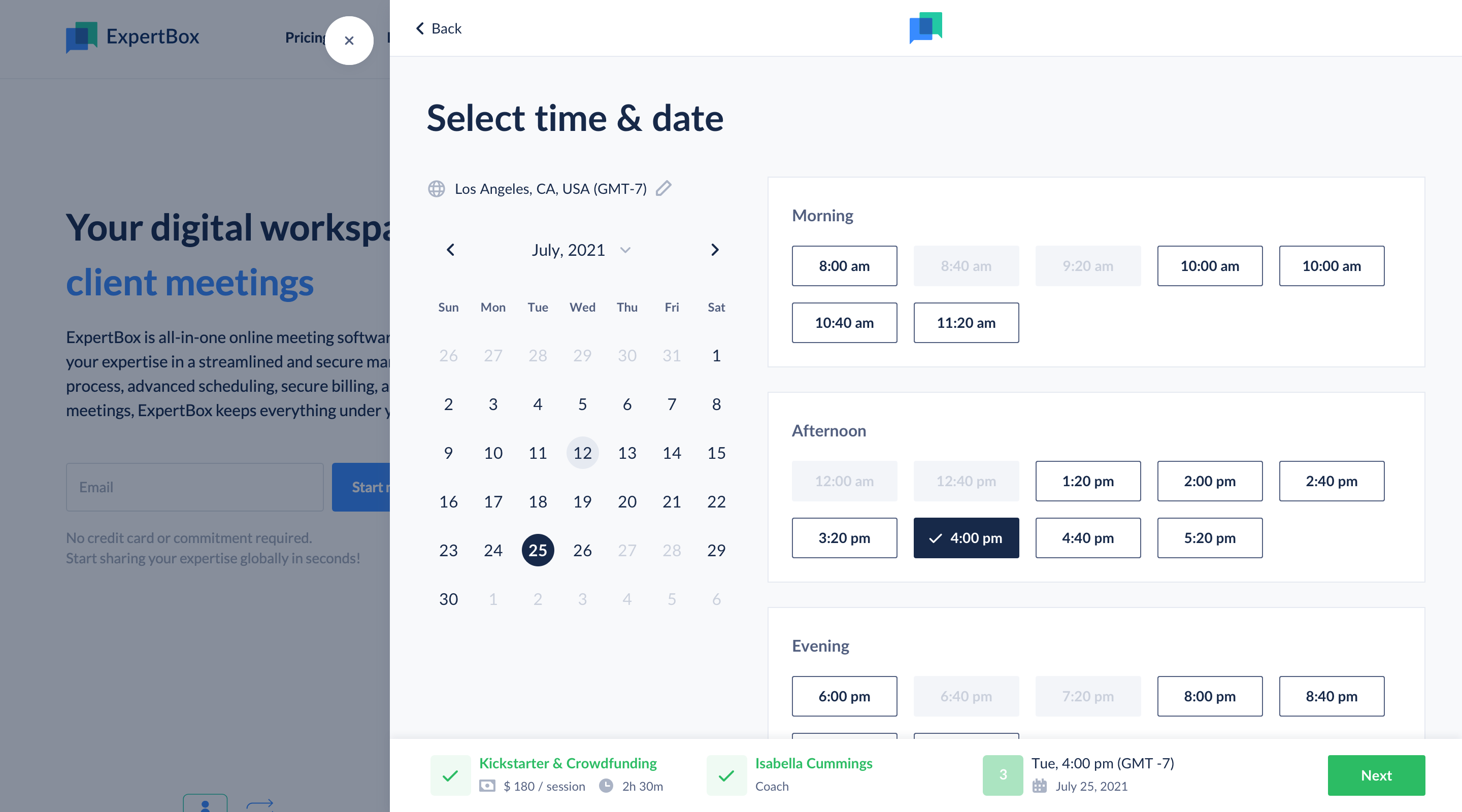
Top two mistakes to avoid on your coaching website
Some mistakes on coaching websites can be costly and push away prospects. Learn about the two greatest mistakes you should avoid.
Mistake #1. Failing to provide a clear call to action
When you start building your coaching website, it’s critical that you clearly understand what you want your visitors to do on the site. Avoid generalized and blurry calls to action like “Change your life today.” That sounds more like a slogan than a CTA. Examples of clear and effective calls to action are “Leave a comment” and “Book a session.”
Mistake #2. Failing to communicate your value
Some coaches want to show they’re the best choice for their clients by focusing on themselves and enumerating their expertise or credentials. However, when it comes to coaching, people want to know what result they can get and how they can benefit from paying for your coaching services. You should clearly communicate how working with you will help your clients achieve their desired transformation.
Five great coaching websites for inspiration
Look at these five coaching websites to get inspired and design your perfect coaching website that converts.
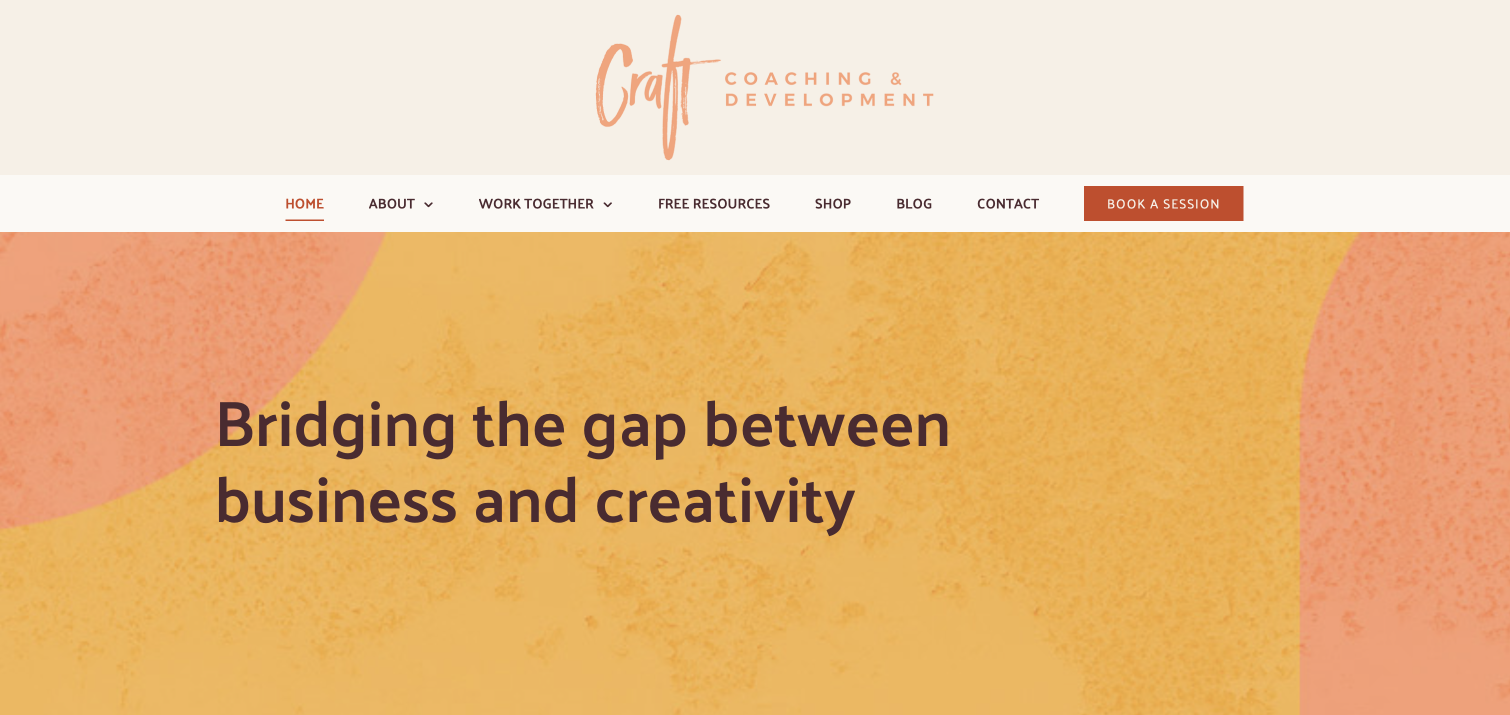
What’s good about it: attractive colors, simple navigation, clear message, booking button
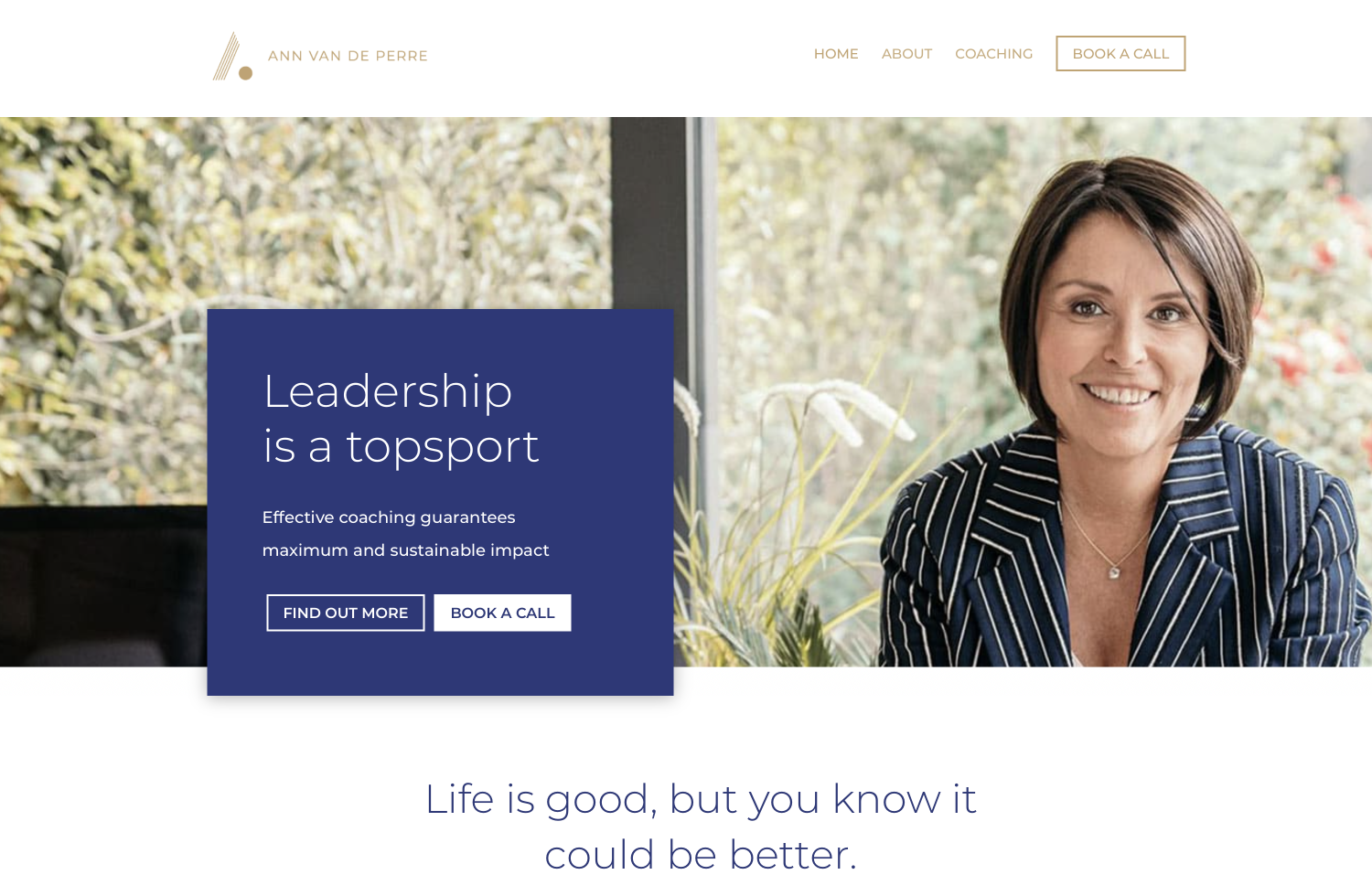
What’s good about it: a photo of the coach, clear calls to action, no distracting elements
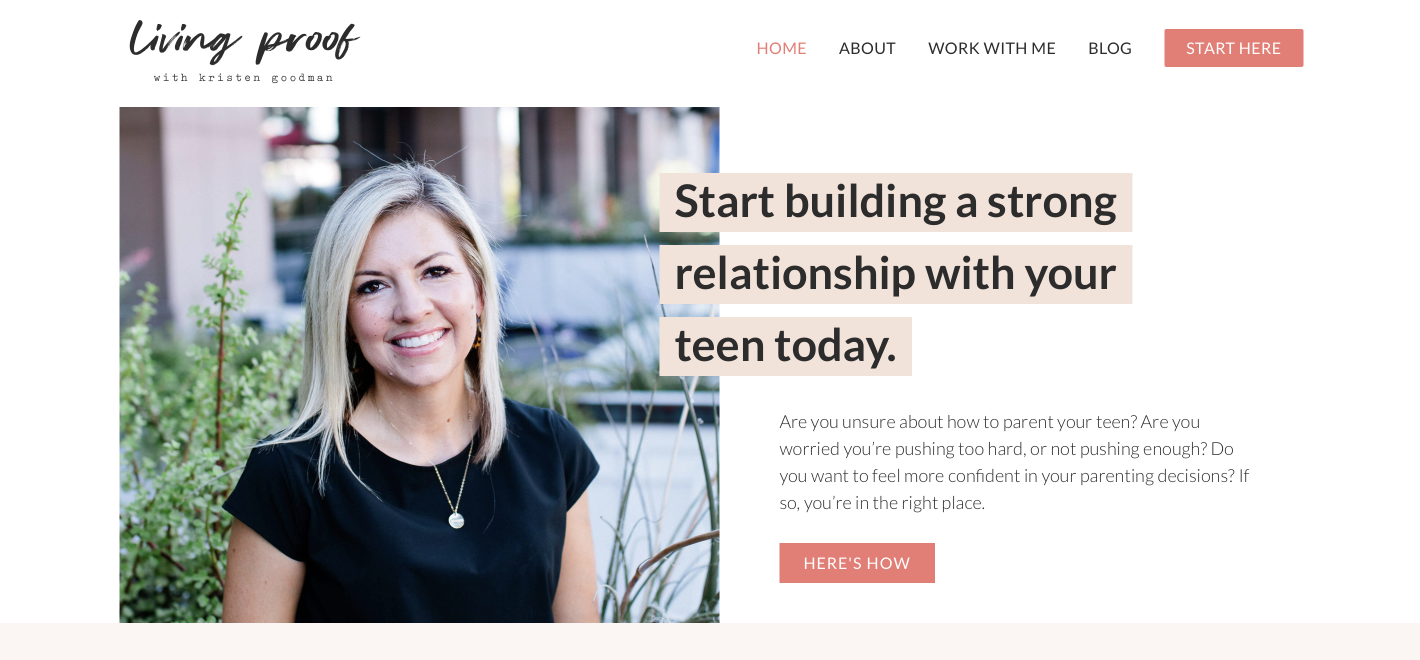
What’s good about it: clear who the services are for, concise messaging, visually appealing

What’s good about it: customer-focused, nice typography, booking option

What’s good about it: obvious who it’s for, attractive design, minimalist navigation panel
Wrapping up
Having a visually appealing, mobile-responsive, fast-loading website with clear calls to action and a simple navigation menu is key to the success of your coaching business. Now you know what items are essential to include and what mistakes to avoid when designing your coaching website to make it a powerful lead generation tool. Subscribe now to learn more about running and promoting a successful online coaching business
A website is just one of the ways to ensure your business’s online presence. Another is your social media profiles. For more on that topic, read our comprehensive guide on using social media to promote your online coaching business.
FAQ
-
The essential elements of an effective coaching website are:
- About/Bio page
- Services
- Blog
- Contact details
- A booking button
-
Choosing a coaching website template that fits your needs can be a daunting task. Here are some key factors to consider when selecting a template:
- Design and layout
- Features and functionality, like booking feature and video conferencing option
- Customizability
- Responsiveness
- Support and documentation
-
The best examples of coaching websites often:
- Showcase feedback
- Have an advanced blog functionality
- Allow to implement subscription options
- Let you add a chatbot and a contact form
- Use CTA elements to drive engagement
- Are fast to load
Check the list of 5 coaching website examples to learn what best practices work in the industry.
